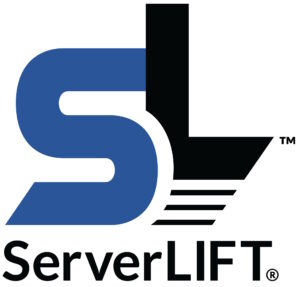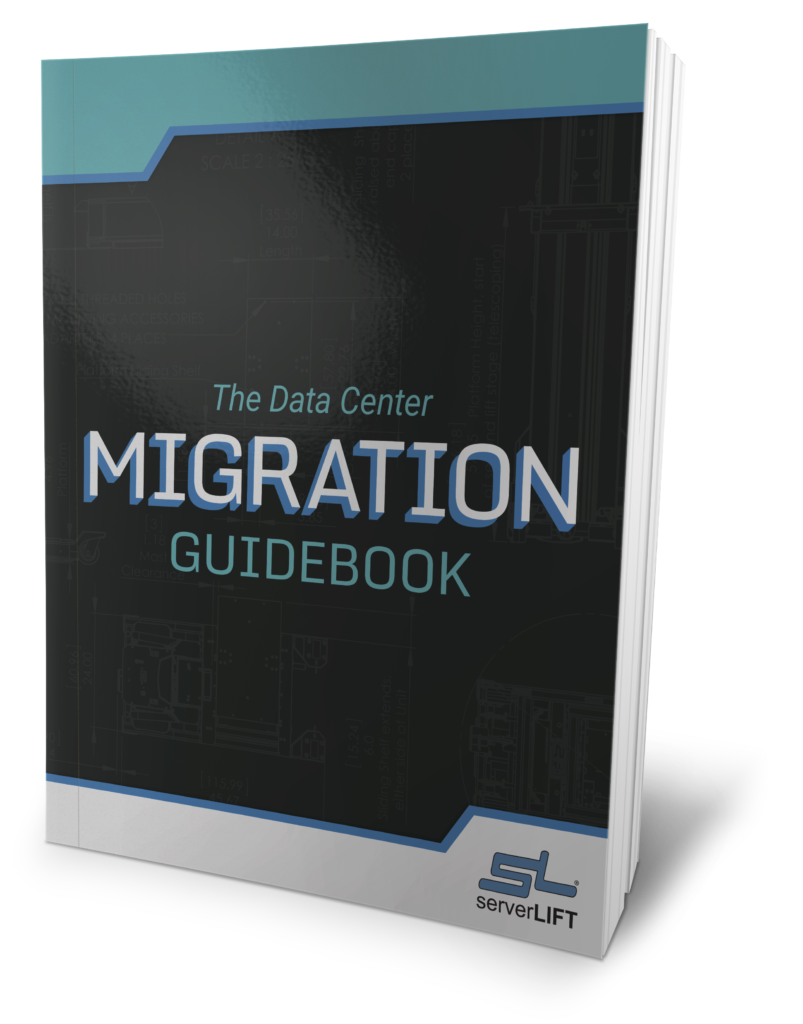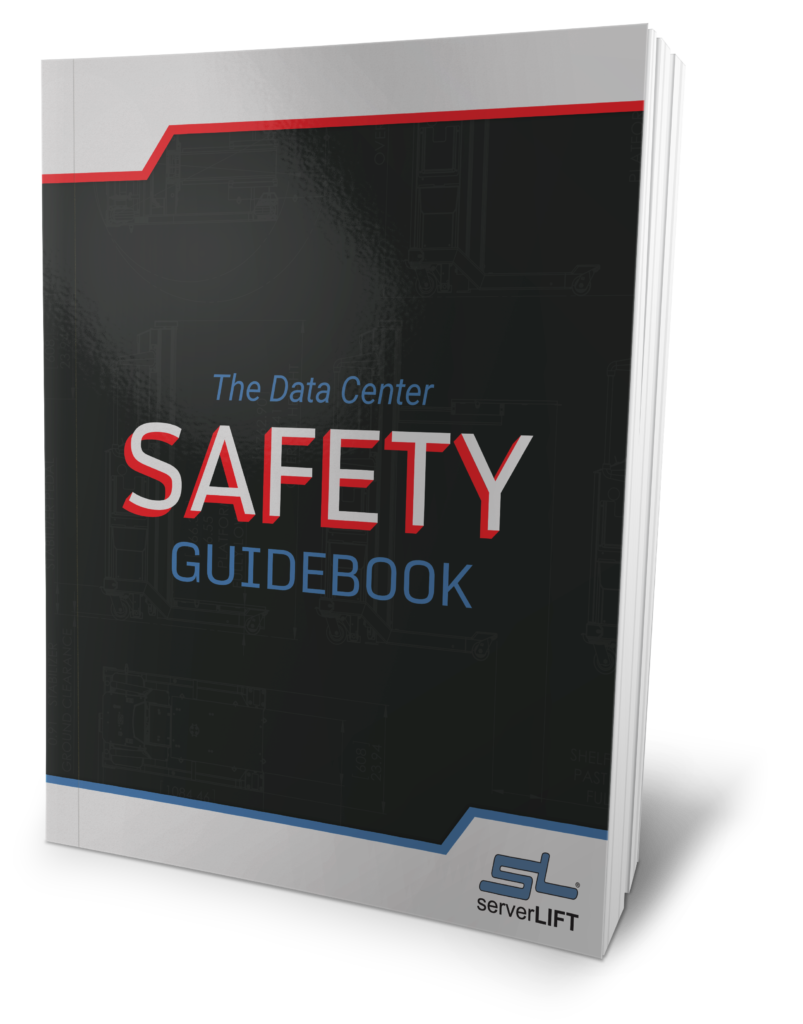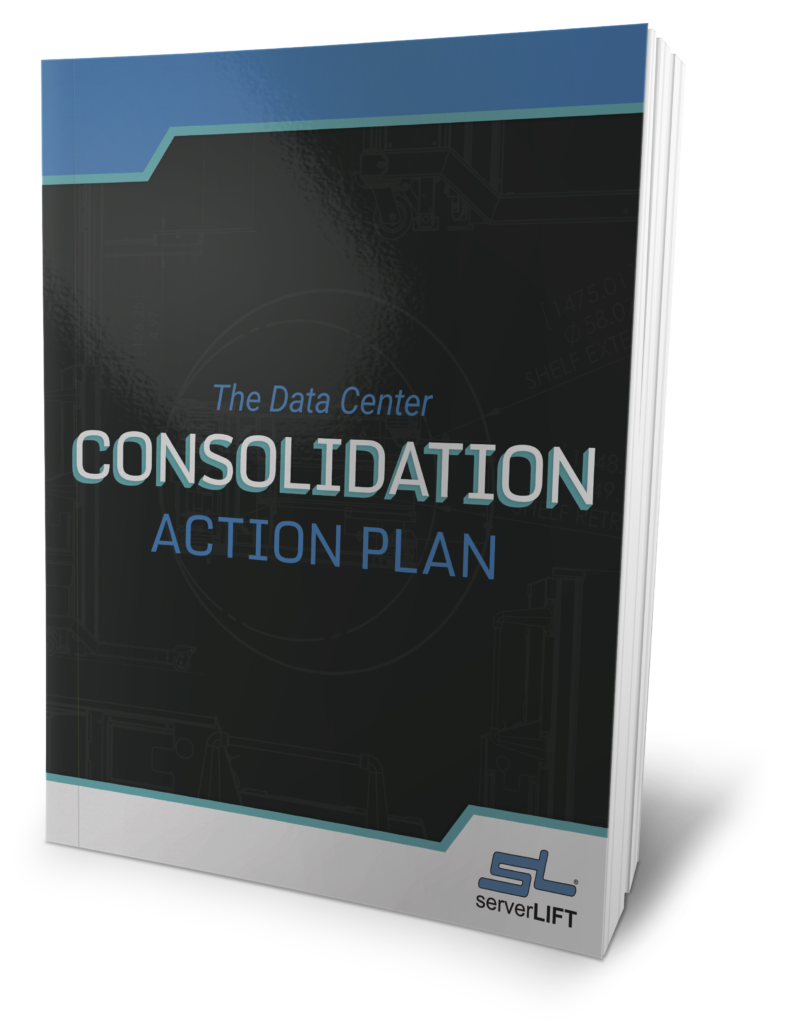The value of a data center lift lies in what it prevents. The injuries that are not only possible but probable when an operator attempts to lift a server on their own represent an expensive risk.
We know this, and yet, highly trained DC tech workers are still manually lifting heavy, expensive IT equipment in data centers all the time, across the world. This is both a long-standing practice and the “dirty little secret” of the IT industry. In doing so, the operator endangers his/her own safety and violates workplace safety standards. These habits are not formed with malicious intent, but they are insidious in nature. A great deal can go wrong.
Without the right equipment for handling servers and protecting operators, IT equipment cannot be moved and installed safely. Facility build-outs, construction, migrations, refreshes, and other tasks are often limited by a lack of proper physical resources—but these limitations also impact day-to-day maintenance and other “lighter” work.
It is critical to eliminate manual handling—the risks involved are huge. Below, we’ll take you through the journey of a server from purchase through operation to illustrate new dangers in the data center and how to avoid them.
Journey to the Data Center
Getting a server to its eventual place in the data center is a long and winding road. Someone in the company goes through procurement, spending tens to hundreds of thousands of dollars on equipment (the scope of any IT project ranges, but even one server is an investment). Then there are the physical tasks of unboxing or unpacking, transportation, positioning, and installation. Here are some of the ways this portion of the journey can potentially unfold:
Manual Handling |
With a Data Center Lift |
|---|---|
 A single operator is installing a new x86 server weighing 390 pounds. He’s alone on his shift, so he tries to muscle the server in and make quick work of the job at hand. Wrenching his leg up to catch the slipping server, he pulls a back muscle badly and is in too much pain to complete the installation. A single operator is installing a new x86 server weighing 390 pounds. He’s alone on his shift, so he tries to muscle the server in and make quick work of the job at hand. Wrenching his leg up to catch the slipping server, he pulls a back muscle badly and is in too much pain to complete the installation. |
 Two operators are practicing social distancing with their data center lift, installing a heavy server. One keeps the appropriate distance, clearing pathways of obstructions, remaining in front of the server to watch cables, and maintaining line of sight with the other operator for signaling. Their installation is done rapidly with no mishaps. Two operators are practicing social distancing with their data center lift, installing a heavy server. One keeps the appropriate distance, clearing pathways of obstructions, remaining in front of the server to watch cables, and maintaining line of sight with the other operator for signaling. Their installation is done rapidly with no mishaps. |
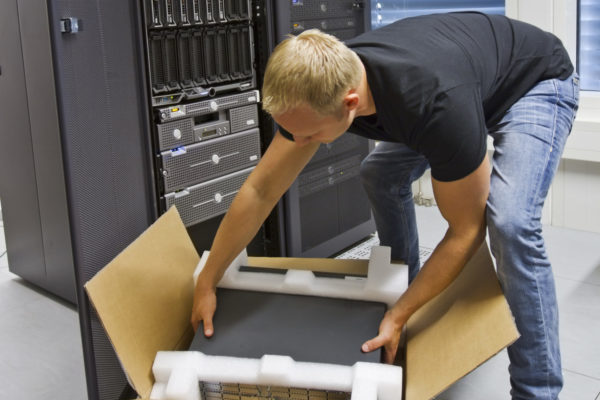 An operator is on an extended 12-hour shift due to social distancing when his delivery arrives; 8 servers for installation, each weighing more than 200 pounds. He cannot pull off the task; it will take 3 operators and 3 extended shifts totaling one and a half days to complete the project. An operator is on an extended 12-hour shift due to social distancing when his delivery arrives; 8 servers for installation, each weighing more than 200 pounds. He cannot pull off the task; it will take 3 operators and 3 extended shifts totaling one and a half days to complete the project. |
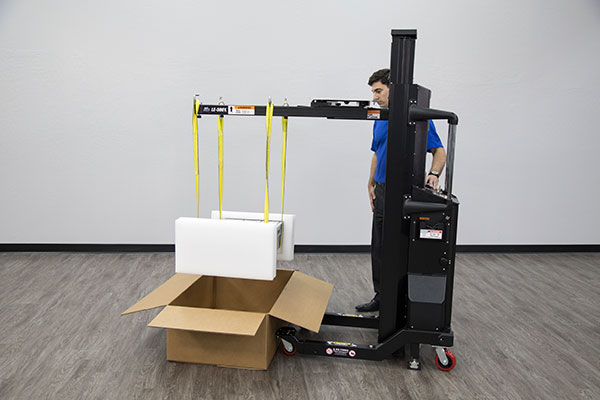 A single operator is spending two weeks at a modular site, installing new hardware into racks. He has rented and has received a ServerLIFT® device for this purpose. The operator uses the rented SL-500X ServerLIFT® device to lift all servers weighing between 50 and 500 pounds, sticking to the original budget and timeline for the move. A single operator is spending two weeks at a modular site, installing new hardware into racks. He has rented and has received a ServerLIFT® device for this purpose. The operator uses the rented SL-500X ServerLIFT® device to lift all servers weighing between 50 and 500 pounds, sticking to the original budget and timeline for the move. |
 Two operators must outfit a new edge data center. In the future, this DC will be mostly manned remotely. The pair has been given only a small warehouse lift to move items, so they must stay on either side of the cart to hold items in place as they move. Now it’s time to place a server in the uppermost cabinet shelf. They cannot support it at its proper height using the lift they have, so they try to do it by hand. The server slips on the way up and the frame is cracked. Two operators must outfit a new edge data center. In the future, this DC will be mostly manned remotely. The pair has been given only a small warehouse lift to move items, so they must stay on either side of the cart to hold items in place as they move. Now it’s time to place a server in the uppermost cabinet shelf. They cannot support it at its proper height using the lift they have, so they try to do it by hand. The server slips on the way up and the frame is cracked. |
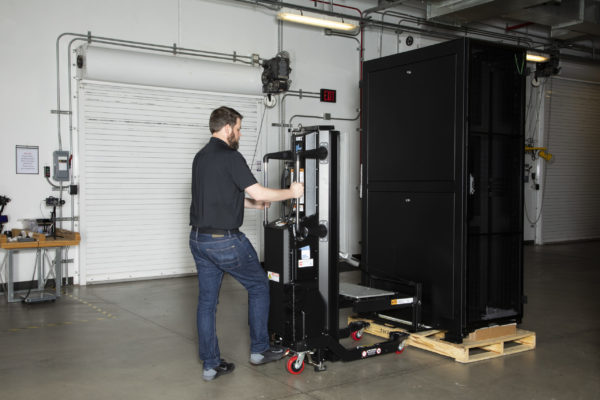 This company is expanding into hybrid multicloud. Two operators have teamed up on their shift to deal with their company’s latest delivery. They have to switch out existing storage in their on-premises data center to accommodate the expansion. The first operator cleans and works the DC lift while the second maintains a safe social distance and will walk ahead as they move the equipment. All equipment is moved without incident. This company is expanding into hybrid multicloud. Two operators have teamed up on their shift to deal with their company’s latest delivery. They have to switch out existing storage in their on-premises data center to accommodate the expansion. The first operator cleans and works the DC lift while the second maintains a safe social distance and will walk ahead as they move the equipment. All equipment is moved without incident. |
Data Center Market Demand: Growing Steadily
Another complicating factor: data center market demand is growing exponentially. Much of the demand is caused by the following:
- The increased need for global digital services—streaming and broadband access.
- Remote working and virtual meetings in the post-pandemic era.
- Edge data centers built closer to the end user to minimize latency.
- Data derived from 5G and the Internet of Things—smart TVs, smartphones, smart appliances, medical devices, wearables, etc.
- Cloud-based solutions: hybrid cloud, hybrid multicloud, cloud storage; all accessible options for companies working to move more data through through faster.
Safe Social Distancing at Work
COVID-19 is also temporarily complicating the IT equipment journey. The pandemic has left data center managers scrambling to respond adequately to calls to expand and to increase output. DC workers have been labeled “essential” in much of the world. Staff must adequately maintain uptime and keep everything on schedule. But there are also non-typical data centers, left entirely without staff. These include unmanned edge DCs, managed service providers, and mobile switching offices.
Ways to Keep Employees Safe:
- Rotate essential workers while others are kept remote.
- Establish new or revamped operations safety protocols designed with disease avoidance in mind. Ensure any core technical personnel tasked with moving IT equipment are up to date with training.
- Perform a risk assessment for every server project or move.
- Equip data centers with Personal Protection Equipment (PPE).
- Clean and sanitize equipment regularly.
- Avoid manual handling of all equipment. Per NIOSH/OSHA guidelines, equipment weighing 50+ pounds should never be lifted manually.
- Use lifts designed specifically for the data center, with a single operator in charge of each machine, including sanitization. A second person can be there for visual safety checks, clearing obstructions, and monitoring cables.
Eliminate Dangerous Manual Handling of Servers
Data centers are resilient, and that’s a good thing. Meanwhile, the IT sector is changing rapidly. The objective is to accommodate growth and major changes while making sure every worker can do his or her job without risk. This means eliminating, wherever possible, the manual handling of equipment. Without this crucial change, any enterprise is days or hours away from being hit with property damage, injuries, lawsuits, or worse.
A data center lift is a major part of the equation. Enable a culture of safety by protecting staff, socially distancing, and eliminating manual handling with ServerLIFT®.



